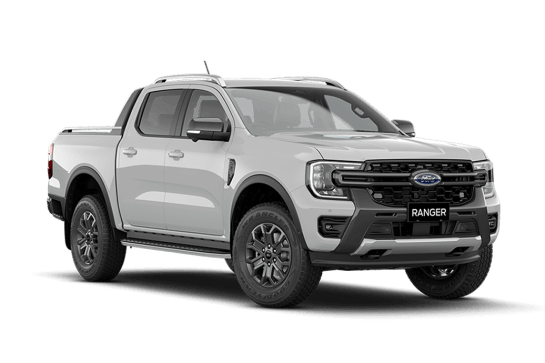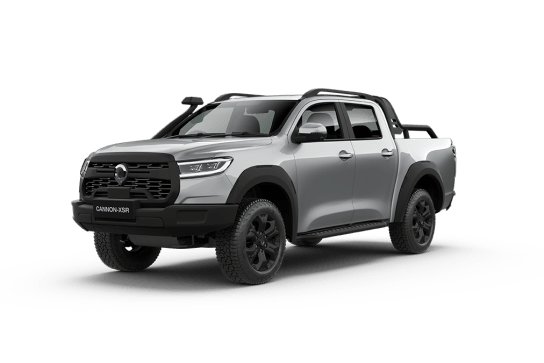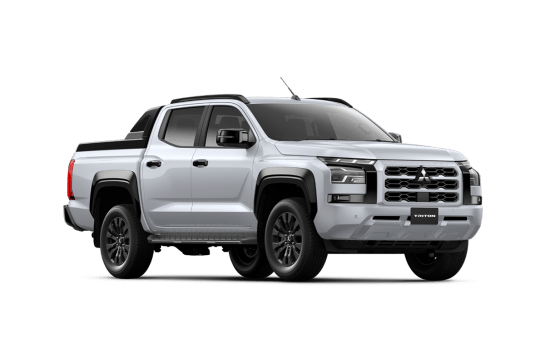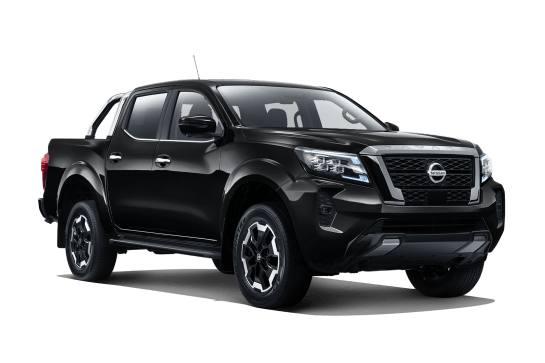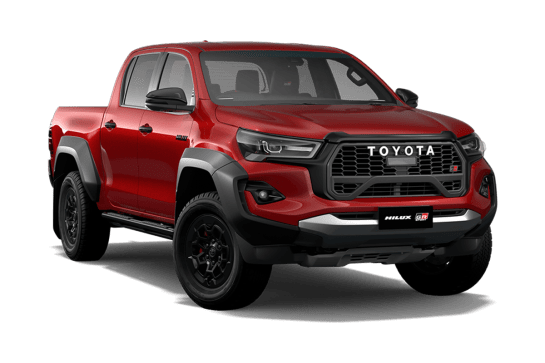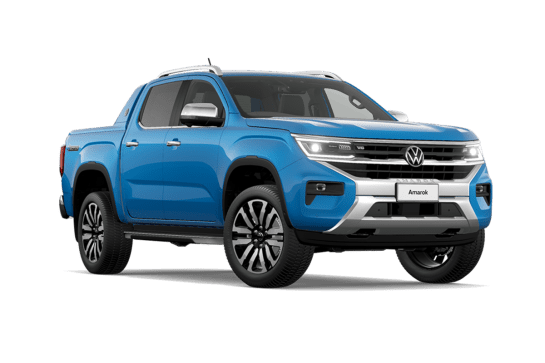
Mercedes-Benz Vito VS Volkswagen Amarok
Mercedes-Benz Vito
Likes
- Fuel economy
- Performance/driver comfort
- 2500kg towing
Dislikes
- Purchase price
- Servicing costs
- Sub-one-tonne payload
Volkswagen Amarok
Likes
- Off-road ability
- Value
- Safety
Dislikes
- No adjustable rear ventilation
- No back seat USBs
- Firm suspension
Summary
Mercedes-Benz Vito
The latest VS20 Vito range, comprising Vito/eVito light commercials and Tourer/V-Class people movers, brings the first major facelift to Mercedes-Benz’s mid-sized (2.5-3.5-tonne GVM) van since 2015, along with numerous comfort, convenience, technology and safety upgrades.
The workhorse fleet is available in medium wheelbase (MWB) and long wheelbase (LWB) Panel Vans and Crew Cabs, with a variety of drivetrain specifications including the all-electric eVito LWB van.
We were recently handed the keys to one of the latest turbo-diesel variants to see how it measures up from a tradie/business perspective in one of Australia’s most competitive vehicle markets.
Read more about
- Tough work van levels up: 2025 Mercedes-Benz Vito, eVito vans and V-Class people mover get big refresh with electric variants to tackle E-Transit Custom and LDV eDeliver
- Mercedes-Benz eVito Panel Van 2024 review: GVM test
- Changing of the van guard: Mercedes-Benz vans like V-Class, Vito, and EQV to go more upmarket, at least 50 per cent electric by 2030 in next generation
| Safety rating | — |
|---|---|
| Engine Type | 2.0L turbo |
| Fuel Type | Diesel |
| Fuel Efficiency | 6.7L/100km |
| Seating | 2 seats |
Volkswagen Amarok
I couldn’t say I’m familiar with Australia’s inland deserts. I thought there were two or three - the Simpson, Gibson, maybe the Great Sandy.
But did you know there are 10? And Volkswagen knows each intimately thanks to a recent Guinness world record verified crossing of them all… in one go.
It took a tweaked-up Amarok six days and 17 hours if you must know, and to celebrate VW has created a limited build (300 unit) version of the dual cab ute called, you guessed it… the 10 Deserts Edition.
Read more about
- Record-breaking Aussie desert assault inspires locally-developed special 2025 Volkswagen Amarok to challenge Ford Ranger, Ineos Grenadier Quartermaster, Isuzu D-Max Blade, LDV T60 Max Plus, Mitsubishi Triton, Nissan Navara Warrior, Toyota HiLux GR Sport
- Volkswagen Touareg 2024 review
- Seven-seat 2025 Volkswagen Tayron SUV revealed ahead of Paris motor show debut: Tiguan Allspace replacement poised to compete with Hyundai Santa Fe, Toyota Kluger and Kia Sorento
And we were invited to steer it on-road and over a variety of challenging (public) off-road trails around Mt Macedon and Cobaw, about an hour’s drive north-west of Melbourne.
Not quite the Strzelecki Track, but tough enough to see if this special VeeDub has what it takes to drive your off-highway ambitions. So, stay with us!
| Safety rating | — |
|---|---|
| Engine Type | — |
| Fuel Type | — |
| Fuel Efficiency | —L/100km |
| Seating | — |
Verdict
Mercedes-Benz Vito8.3/10
The Vito 119 Panel Van LWB offers excellent performance and driver comfort, with styling and all-round refinement that could make it an appealing business partner. However, the absence of an ANCAP star rating and a sub-one-tonne payload limit could be deal-breakers for some tradies and fleets alike, along with a list price that exceeds its Toyota HiAce LWB equivalent by almost $30K. Therefore, only a potential buyer can decide if its positives outweigh its negatives.
Volkswagen Amarok8/10
It’s been developed with adventurous four-wheel-drive enthusiasts in mind, but we don’t know exactly what it will cost. However, given the current ballpark estimate, the value equation will likely stack up well and things like safety and the ownership package are solid. And we know it’s tough and capable in rough going, which is the main point, after all. This package works brilliantly well.
Note: CarsGuide attended this event as a guest of the manufacturer, with travel, accommodation and meals provided.
Design
Mercedes-Benz Vito
Our LWB test vehicle rides on a 3430mm wheelbase, with 5370mm overall length and 1928mm width. Its 1916mm height ensures comfortable access to height-restricted areas like multi-storey car parks and underground loading zones and it has a reasonably tight 11.8-metre turning circle.
The rear-wheel drive chassis includes MacPherson strut front suspension, independent semi-trailing arm/coil-spring rear suspension, four-wheel disc brakes and rack and pinion steering.
It’s arguably the best-looking mid-sized van on the market with its bold frontal styling, purposeful wedge-shaped profile and elegant contours along its flanks.
The neat and functional interior has fabric-trimmed seats with an attractive speckled pattern on their facings. It also comes standard with a chrome interior package including air-vents, air con switch panel, interior door handles/surrounds and more.
The minimalist dash design results in a clean and uncluttered appearance. Even so, it still (thankfully) includes mechanical 'piano key' buttons for numerous functions and knurled barrel-style switches for controlling audio volume, cabin temperature, airflow direction and drive modes, to avoid the potential driver distraction of touchscreen prompts.
Volkswagen Amarok
The Amarok is already a sleek-looking dual cab and the ‘Clear White’-only 10 Deserts Edition picks up unique black badging, a standard black tonneau cover and 17-inch satin ‘Asphalt Black’ alloy wheels shod with all-terrain rubber. More hardcore off-road tyres are a no-cost option, which is a nice touch, and there are black side steps and a ‘Asphalt Black’ mesh grille with ‘Bolder Grey’ inserts.
An ARB lift kit raises ground clearance by 40mm, from an already decent 235mm to 275mm, and ‘Genuine VW’ underbody protection is added.
The interior is cool, calm and collected in typical VW fashion with a predominantly dark grey colour palette highlighted by silver and brushed metal accents.
The 8.0-inch digital instrument display and 10.1-inch multimedia screen look contemporary without being garish, and there’s a workable mix of digital and physical controls, with climate being the former and audio the latter.
Practicality
Mercedes-Benz Vito
With its 2068kg kerb weight and 3000kg GVM, our test vehicle has a 933kg payload rating which falls short of the one-tonne-plus capabilities of numerous rivals.
However, it’s also rated to tow up to 2500kg of braked trailer, which is 1000kg more than Toyota’s dominant HiAce. And with its 5500kg GCM rating (or how much it can legally carry and tow at the same time) the Vito can carry its maximum payload while towing its maximum trailer weight.
Access to the cargo bay is through sliding doors on each side with 822mm openings, or the single tailgate (optional rear barn-doors are also available). With load floor dimensions of 3061mm length and 1695mm width, along with 1270mm between the rear wheel-housings, it will carry up to two standard Aussie pallets or up to three Euro pallets, secured with a choice of eight load-anchorage points.
Standard equipment includes the cargo bay’s internal walls and doors being lined from floor to roof height. The optional Cargo Pack's solid metal bulkhead serves as both a noise insulator for the cabin and a sturdy cargo barrier, with large assist handles on each side and a full-width open storage area at its base ideal for storing ropes, straps, load-padding etc.
Access to the driver’s cabin is through doors with a relatively narrow opening angle. The seat padding is firm and well-bolstered, with the Cargo Pack’s two-seater bench offering sufficient knee clearance from the dash for central passengers.
However, central seat foot-room is limited for those with large boots and the bench seat also has no adjustment, so we’d recommend only short trips for a crew of three.
Cabin storage includes a large-bottle holder and bin in the base of each door, with a smaller bin above. The dash offers storage slots below the air-vents, plus small-bottle/cupholders and three handy open storage areas across the dash-pad.
There’s also a single glove box, overhead glasses-holder and a useful-sized compartment hidden beneath the passenger seat which is accessed through a side hatch.
Volkswagen Amarok
At just over 5.3m long, a little more than 1.9m wide and close to 1.9m tall (with a 3270mm wheelbase) the Amarok lives within the same dimensional footprint as key competitors like the Ford Ranger, Toyota HiLux and Isuzu D-Max.
Up front, it's easy to get in and out thanks to big door apertures and this limited edition’s slightly higher ride height. There’s plenty of breathing space and good separation from your co-pilot.
In terms of storage there are door bins with room for decent size bottles, a couple of cup/bottle holders in the centre console, a lidded storage box between the seats (which doubles as a centre armrest), a wireless charging pad ahead of that, two glove boxes, a shallow well in the centre of the dashtop and a drop down sunglasses holder.
In the back, sitting behind the driver’s seat set to my 183cm position, there’s plenty of head, leg and toe room.
Three full-size adults across the second row will be okay for short to medium trips and a trio of up to late teenage kids will be fine. There are bins in the doors with room for medium-size bottles, a fold-down centre armrest with a pair of cupholders and map pockets in the front seat backs.
On the not so good side, there’s no individual ventilation control for back-seaters and the only power option is a 12-volt socket with USB-A and -C ports confined to the front only. Shout out for the USB input in the mirror housing for a dash cam, though.
The roughly 1.5m long by 1.2m wide illuminated tray will accommodate a Euro pallet between the wheel arches. There are multiple tie-down rings and tailgate closing is assisted.
Maximum towing capacity for a braked trailer is 3500kg (750kg unbraked), a full-size spare is on-board and there are two towing hooks at the front.
Price and features
Mercedes-Benz Vito
Our test vehicle is the Vito 119 Panel Van LWB, which like all light commercial models (except the eVito) comes standard with a 2.0-litre four-cylinder turbo-diesel engine and nine-speed automatic for a list price of $79,796.
Our example has also been fitted with a couple of factory options including a digital rear-view camera ($1031) and the 'Cargo Pack' ($2287) which adds a two-passenger front bench seat and full-width metal bulkhead with window, plus sturdy wood-flooring and bright LED lighting for the cargo bay.
These options bump the list price to $83,015, plus on-roads, so for such a sizeable spend you’d rightfully expect to get a lot more than just a prestigious badge as standard equipment.
Externally, the Vito delivers on that expectation with stylish 17-inch alloy wheels and 225/55 R17C tyres with a full-size steel spare, colour-coded front and rear bumpers, chrome grille highlights, black roof rails, rear window tint, multibeam LED headlights, LED tail-lights and classy LED puddle-lamps that project a Mercedes-Benz logo.
MY25 equipment upgrades fitted as standard include the latest 'MBUX' multimedia system with a big 10.25-inch LCD colour touchscreen, 'Hey Mercedes' voice command, wireless Apple CarPlay/Android Auto connectivity and more.
The driver’s instrument cluster gets a 5.5-inch central colour display and all models are now fitted as standard with a multifunction steering wheel with touch-sensitive controls, plus keyless start and an electronic parking brake replacing the old spring-loaded pedal version.
Standard safety has also been upgraded with active lane-keeping assistance, traffic sign recognition and tyre pressure monitoring.
Our 119 model also comes with complimentary metallic and non-metallic paint finishes, so the latest Vito is more indulgent than your typical steel-wheeled workhorse without compromising its core load-carrying capabilities.
Volkswagen Amarok
Although it’s being cagey on exact pricing at this stage, Volkswagen says the Amarok 10 Deserts Edition will be positioned between $65 and $70K (likely closer to former than the latter).
The Amarok Life TDI500 this car is based on boasts a healthy standard equipment list including LED headlights, daytime running lights and fog lights, adaptive cruise control (with stop/go), alloy rims, a towbar, wireless charging and tailgate lift assist plus wireless Android Auto and Apple CarPlay.
There’s also six-speaker audio (with digital radio), single-zone air-con, electrically folding and heated exterior mirrors (with courtesy lamps), auto headlight and high-beam control, a leather-trimmed steering wheel and gearshift, and auto rain-sensing wipers.
Not a bad fit-out, even before adding the extra 10 Deserts kit (see Design) and that prospective price puts it between the existing Amarok TDI500 Life ($59,490) and Style $69,740), both before on-road costs, and a step up from Ford’s close to $57K limited-run (1500 unit) Ranger Black Edition.
Under the bonnet
Mercedes-Benz Vito
The 2.0-litre four-cylinder intercooled turbo-diesel meets Euro 6 emissions standards using AdBlue.
It produces 140kW of power at 4200rpm and 440Nm of torque between 1350-2400rpm. This is paired with a smooth and intuitive nine-speed torque converter automatic, which offers three drive modes comprising 'Comfort' (the standard default setting), 'Sport' and 'Manual'. The latter’s sequential manual-shifting is via steering wheel-mounted paddles.
Volkswagen Amarok
The record-breaking Amarok was a V6 Style, but this limited edition is based on the Amarok TDI500 Life, so a 2.0-litre turbo-diesel four-cylinder engine sits under the bonnet, sending 154kW/500Nm to the rear, or all four wheels, via a 10-speed automatic transmission.
This twin-turbo, dual-overhead cam unit is shared with the Amarok’s twin under the skin, the Ford Ranger (where it’s referred to as the ‘Bi-Turbo’), and the selectable all-wheel-drive system features three driving modes - 2H, 4H & 4L - and there’s a mechanical rear diff lock.
Efficiency
Mercedes-Benz Vito
Mercedes-Benz claims official combined average consumption of only 6.7L/100km but the dash readout was showing 8.3 at the completion of our 342km test, of which about one third was hauling a heavy payload.
This was lineball with our own figure, calculated from fuel bowser and tripmeter readings, of 8.5L/100km. Any mid-sized van that can produce genuine sub-10L economy in 'real world' urban use gets a big tick from us and, based on our figures, should produce an excellent driving range of around 800km from its 70-litre diesel tank.
Volkswagen Amarok
The TDI500’s official fuel consumption figure on the combined (urban/extra-urban) cycle is 7.2L/100km. With an 80-litre fuel tank on board, theoretical range is around 1100km.
Stop-start is standard, but we’ll have to wait for an as-tested figure, as this launch drive leant heavily into arduous off-road work.
For reference, in previous testing we’ve recorded real-world consumption closer to 10.0L/100km for this Amarok powertrain, which would deliver a driving range of around 800km.
Driving
Mercedes-Benz Vito
The Vito offers exceptional comfort for the driver, with the prestige look and feel of its leather-wrapped and height/reach adjustable steering wheel combined with a driver’s seat offering a fold-down inboard armrest, height/reach-adjustable lumbar support plus adjustable base-cushion rake and length.
A left footrest would be icing on this comfort cake, but in its absence there’s plenty of clear floor space in which to rest your left foot.
Eyelines to all mirrors are good and although the centre-seat headrest for the Cargo Pack bench partly blocks the central mirror’s rear view, most of the tailgate’s window remains clear.
Given the huge blind-spot over the driver’s left shoulder created by the cargo bay’s solid walls, the Vito’s blind-spot monitoring, rear cross-traffic alert, 360-degree camera etc are effective in creating a safety zone in such a vulnerable area.
The steering feel is superb, as we’ve come to expect from Mercedes-Benz commercial vehicles. Cabin noise remains commendably low even at highway speeds, during which the engine needs only 1700rpm to maintain 110km/h. However, tyre noise can become intrusive on coarse bitumen surfaces.
Engine response in city and suburban use is excellent, as the nine-speed auto efficiently keeps the turbo-diesel operating within its 1350-2400rpm peak torque zone. And 440Nm of torque is competitive for a van this size, ensuring strong acceleration with or without a load.
The driver-selectable Sport and Manual drive modes provide greater driver engagement and direct control respectively, but for most driving the default Comfort setting provides a commendable balance of comfort and engine response which allows the Vito to shine in a working role.
We proved this after loading 770kg into the cargo bay, which with driver equalled a total payload of 870kg which was only about 60kg under its legal limit. The coil-spring rear suspension compressed 50mm under this weight, which still left more than enough suspension travel to ensure there was no bottoming-out during our test drive.
This included our usual 13 per cent gradient, 2.0km set climb at 60km/h, in which it downshifted to fourth gear and 2000rpm (bang in the middle of its peak torque band) to easily reach the summit.
Engine-braking on the way down, in a manually-selected second gear, was impressive for an engine with relatively small displacement restraining almost 900kg in payload, requiring only one firm application of the brake pedal. Overall, it proved to be a competent load-hauler.
Volkswagen Amarok
The Amarok TDI500 is easy and effortless to drive on the open road. Peak power of 154kW (at 3750rpm) is adequate, but it’s the 500Nm of pulling power, delivered exactly where you want it at just 1750rpm, that sets the tone.
With 10 ratios to cycle through, the auto transmission also helps keep things in the sweet spot and while you’re aware of a certain amount of diesel thrum under acceleration, in this type of ute that’s more reassuring than annoying.
Suspension is by double wishbones and coil springs at the front with leaf springs supporting a live axle at the rear. And as is typical for a ute with this set-up (particularly unladen) bumps on a typical B-road make their presence felt, but not to an alarming degree.
We drove it on loose dirt roads and some challenging trails (which we’ll get to shortly), but overall it feels capable and pretty well planted on the road.
The steering is electrically assisted and there’s a good connection between your hands on the wheel and the tyres on the road.
Standard 17-inch alloys are shod with 225x70 Continental CrossContact ATR (all-terrain) tyres and they’re civilised on the highway. Also worth noting more aggressive off-road-focused rubber is a no-cost option, which is a nice touch.
The brakes are discs front and rear, which is notable because the entry-level Amarok Core is fitted with drums at the back.
On the open-road and in slow-going off-highway, where you’re constantly feathering the brakes during steep declines, braking remains strong with a progressive pedal feel.
The off-road section of the launch drive was more about the nature of the terrain than ultra-steep inclines or declines.
Big boulders, cavernous ruts, bulging tree roots as well as loose gravel and sand surfaces were the flavours of the day and the Amarok did a great job.
Standard approach, departure and ramp-over angles for the Life TDI500 are pretty solid, but an extra 40mm of ground clearance makes a big difference.
Worth noting the 10 Deserts Edition held its own with the more heavily modified V6 Style that set the Guinness record, which we also had a chance to steer.
With around 80kg less weight on the front axle, the four-cylinder feels agile and eager in the rough stuff and we saw some impressive axle articulation as the suspension and drive systems helped the Amarok pick its way through the most difficult sections.
We stepped our way through two-wheel high, four-wheel high and 4WD low modes, pulling in the diff lock only when things got hairy.
In terms of miscellaneous observations, it’s worth noting the turning circle is 12.8m. The Amarok is a sizeable vehicle and you’d expect the turning circle to be up there, but just be prepared for a reasonably wide arc when you’re parking or making three-point turns.
And the front seats are a stand-out. They’re pretty much sports editions - grippy and comfortable even after a full day behind the wheel on- and off-road. And their lateral support keeps you nicely located in the corners.
Safety
Mercedes-Benz Vito
Although Vito vans built from January 2023 are still without an ANCAP star rating, models built from May 2024 scored 90 per cent for collision avoidance in ANCAP’s Commercial Van Safety Comparison, earning the highest Platinum grading for scores of 80 per cent and above.
The latest Vito’s active safety additions join a suite of existing features including front/thorax/window airbags for driver and passenger, AEB, lane-keeping, blind-spot and rear cross-traffic alert, daytime running lights, front/rear parking sensors and lots more.
Volkswagen Amarok
The Amarok was given a maximum five-star ANCAP assessment in 2022 and active (crash-avoidance) tech includes AEB (with pedestrian and cyclist monitoring), lane keeping assist and lane departure warning, adaptive cruise control (with stop and go function), rear cross-traffic alert, blind-spot monitoring, hill-descent control, tyre-pressure monitoring, driver fatigue alert, roll-over mitigation and trailer sway control.
There’s also ‘Swerve Steer Assist’, road and speed sign recognition, front and rear parking distance controls, and a reversing camera. That’s an impressive suite for the category.
If a crash is unavoidable, there are nine airbags onboard - dual front and front side, dual front knee, full-length side curtain and a front-centre bag to help reduce the chance of head clash injuries in a side-on crash. Again, above average.
The Amarok scores well with ANCAP for vulnerable road user protection, multi-collision braking minimises the chances of secondary collisions following an initial impact and there’s an auto emergency call-out function able to sense if the driver is incapacitated following an airbag deployment.
Important to note there are top tethers and ISOFIX anchors for baby capsules and/or child seats on the outer rear seat positions only.
Ownership
Mercedes-Benz Vito
The Vito comes with a five years/250,000km warranty which includes 24-hour roadside assistance.
Scheduled servicing is 12 months/25,000km whichever occurs first. Capped-price servicing for first five scheduled services totals $5555, or a pricey average of $1111 annually.
Volkswagen Amarok
Volkswagen covers the Amarok with a five-year/unlimited-km warranty, which is expected in the mainstream market.
Service is recommended every 12 months/15,000km, which is pretty handy, and the price averages $360 for the first five years, which is competitive for the class and price point.
Fixed price three- or five-year plans are also offered, which brings a modest discount and locks in the pricing. Twelve months of roadside assistance is complementary, renewed for another year each time you service the car at an authorised VW dealer.

